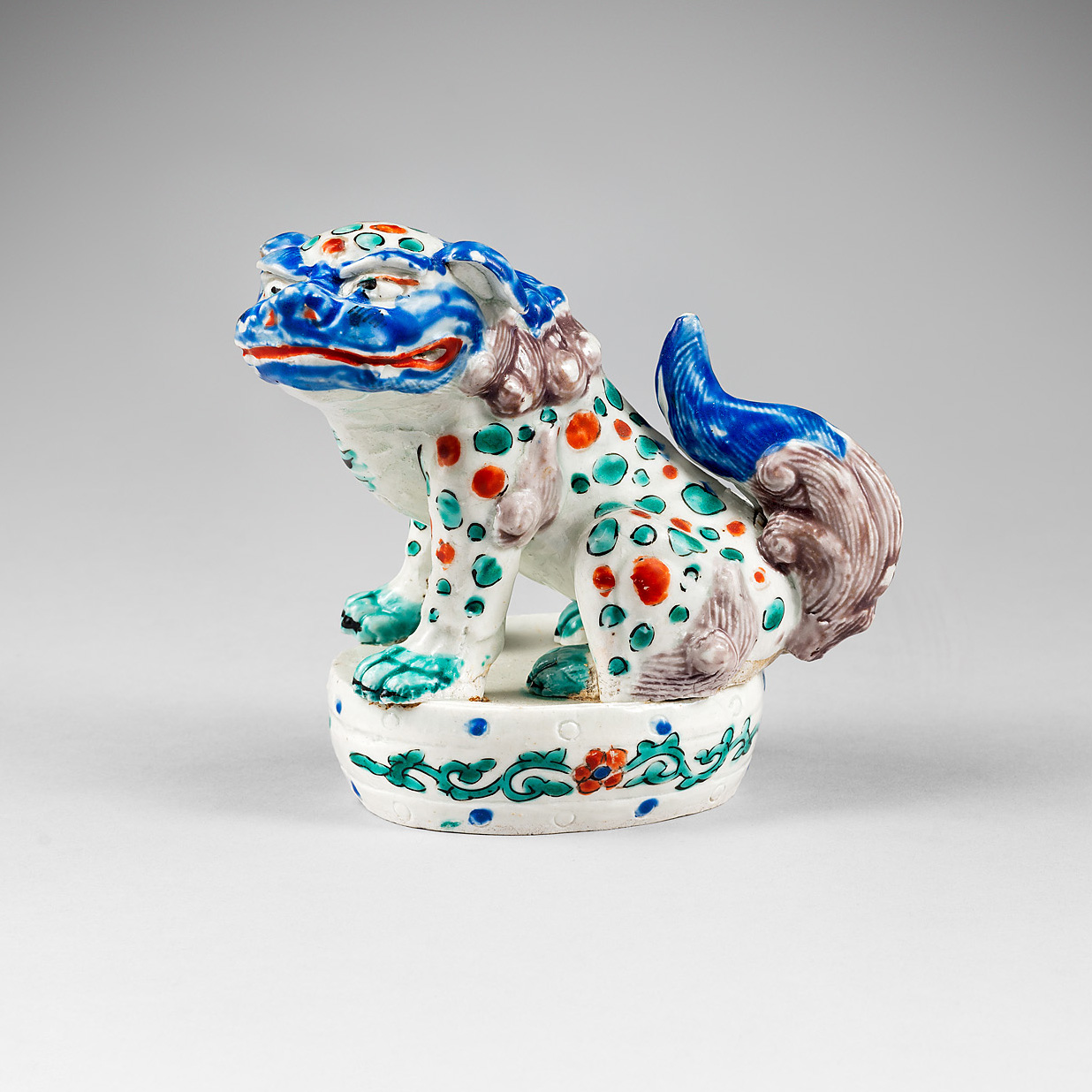Over the grayish white porcelain and blue-tinged glaze, the figure is profusely painted in overglaze enamels of the kakiemon palette: red, blue, turquoise, aubergine and black while the yellow is notably omitted. The animal is seated in an alert posture, its tail raised, on a studded elliptical drum-shaped base with karakusascrolls. its face resembles that of a tiger. There is an impression of gauze fabric on the underglaze base.
